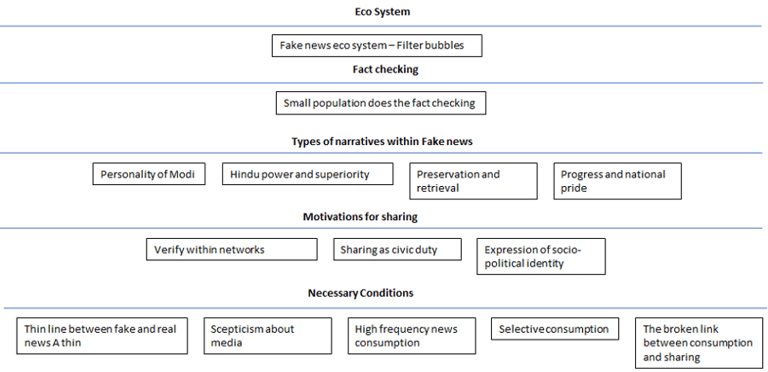Cognitive Bias and Internet Control
This project aims to track the channel of mis-information and provide appraise methods to tackle at each node.
TECHNOLOGY POLICY - INDIA
3/1/20254 min read


Information is a basic functionary of society. Communication, propaganda, knowledge, and scientific discoveries are all the result of the wide access and spread of information. However, in the industrial era (post-medieval Europe), information was limited and was available in selected places. In the 21st century, information has become abundant. Internet access allowed the public to be informed about almost anything. Unrestricted and easy access to information enabled people to understand society better and make informed decisions. The public also created ways to fight social and political injustices using internet platforms. Some examples of this are the infamous Arab Spring of Egypt in 2011, and the #Metoo movement in 2017. In addition to these public movements, internet communications also have a sceptical side. The Internet, while advancing society's knowledge consumption, it deepens the existing societal divides.
Existing divides within society are strengthened by what Alex Burns calls – Filter Bubbles. A filter bubble is a phenomenon where the public increasingly consumes biased information to validate their selfish arguments. Ironically, with the increase in filter bubbles, historical myths will become truths. This happens because people tend to accept myths as realities after watching uncorroborated evidence on WhatsApp and other social media. Unfortunately, the uncorroborated information has also been circulated by mainstream media houses. Indian national media ‘The Wire’ cited a BOOM report showcasing 40 fake national news reports by Indian media in 2020. This report hypothesises that the national media gathers information without proper research or validating facts. Low-quality journalism has earned ill fame for Indian media houses, especially the electronic media is criticised for its low standards. In a situation where the media houses are degrading their quality, the public relies on social media. This situation creates a society where real and fake news are on a thin line between them. In this context, this project becomes important. It attempts to bring an objective understanding of the problem of Misinformation, or popularly known as Fake news, and cognitive bias, and provides one of the many solutions available.
Internet Usage and Data Consumption
Approximately 70% of the world’s population uses the internet, and 43% of India’s population has access to the internet as of 2020.
The average time spent by an individual on the phone is around 4.5 hours per day in India, as per the report sourced by Times of India.
Data consumption per individual is 14 GB per month, per the article published in Financial Express.
What is Misinformation?
Fake news is the information sent out to the public with a presentation of (typically) false or misleading claims as news. Some opine that the news is considered fake only if they are misleading by design. Such a definition would omit the poorly covered news published with less research and strong articulation. Such news also misleads the public, even though the intent is not to do so. However, it would be a good practice to segregate these kinds of news reportage into something between fake and real.
The phenomenon of fake news surfaced with the widespread internet and social media platforms. Before the internet, it was the selective, licensed, and capital-intensive firms that produced and distributed news. Today, anyone with a computer can launch an e-paper. The contents of such an e-paper might or might not be verified. Some opine that traditional journalism is in decline. They attribute the decline to the digitalisation and capital-intensive nature of reporting. Media organisations backed by billionaires will have bias and keep journalistic ethics aside. In India, and in general, such capital-intensive media will be anchored to the political ideas of a few. In 2022, India ranked 150/180 in the press freedom index. This shows that journalism is immensely biased. An article published in Outlook argued that India has declined in its journalistic attitude and is also a dangerous place for journalists. The rise of social media and the high frequency of information consumption will further make the news less credible.
BBC survey reveals that people in India associate fake news with things that clash with their socio-political identities or deeply cherished beliefs. Usually, these involve politics, policies, personalities and culture. A map has been created from the BBC News report. The map shows how fake news is generated and spread across the public.


Figure 1 The flow of Fake News in India (Author generated this map from his understanding)
The bottom layer consists of five necessary conditions that will lead to the spread of fake news. The information available on social media should be in such a way that the information should be difficult to distinguish between fake and real news for a layman. Such news would only be accepted when there is low confidence in the mainstream media and there is high consumption of online information. From the above, it is clear that both conditions are present in India. Further, selective consumption is a behavioural trait of human beings. Even if it is a loose statement, the algorithms ensure that the information shown on the screens results from individual search history, forcing it to be selective. Finally, there is a broken link between consumption and sharing. Not all the information which is shared is consumed. Thus, sharing fake news becomes more rampant than consuming it. This base layer situation appears to be ripe in India. Motivation for sharing is an expression of identity and verification from the social group. People further believe that sharing the news over social media is a civic duty, which is true.
